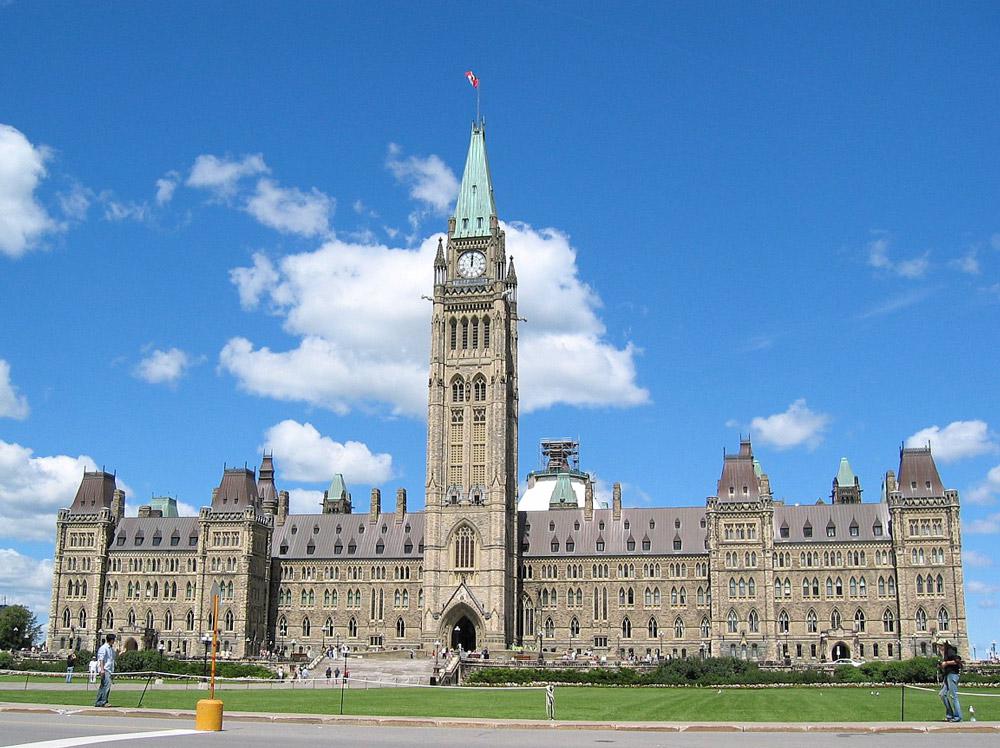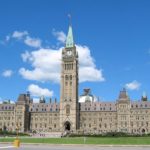But there are still big changes ahead worth noting. Here’s an overview.
No movement on resale right
In the week prior to the budget announcement, the Canadian Press had reported that there may be some mention regarding adoption of the Artist’s Resale Right in the new economic plan. In the end, there was no mention in the budget of any such measure.
Artist groups such as CARFAC have been working towards adoption of the right, which would deliver artists 5 per cent of the sale price from secondary public sales of their work through auction houses and commercial galleries. Similar measures have been adopted in more than 60 other countries.
Last year, CARFAC noted that the lack of an Artist’s Resale Right in Canada resulted in a loss of $75,080 in potential revenues for Canadian artists during spring auction season.
“We have had some good meetings lately with members of parliament from all parties,” says Melissa Gruber, advocacy and communications director at CARFAC. The organization has been publicly advocating for Resale Right adoption in Canada since 2010.
“We were surprised to hear [in the media] it might be part of a budget,” said Gruber, “because it wouldn’t be something the government itself is spending money on. That’s just one legislative method for the government to make changes—there are all sorts of other ways to do that.”
Private investment in the arts encouraged
Reflecting on the budget, the Canadian Museums Association noted in a related release that “The government is sending a strong message to the arts community to work in partnership with Canada’s private sector to ensure its long-term sustainability.”
One of these signals came in the form of a special tax credit to encourage first-time donors to charities.
The First-Time Donor’s Super Credit will increase the value of the federal Charitable Donations Tax Credit by 25 per cent if neither the taxpayer nor their spouse has claimed the credit since 2007. The FDSC will apply on up to $1,000 in cash donations claimed in respect of any one taxation year from 2013 to 2017.
Also, an existing program designed to provide matching public funds for private-sector donations was extended.
The Endowment Incentive component of the Canada Cultural Investment Fund provides government grants to match private-sector donations. When the incentive program was introduced in 2001, the benefit for each arts organization was capped at $10 million over the lifetime of the organization. In the 2013 budget, this cap was increased to $15 million over the lifetime of the organization.
The 2013 budget mentioned that large organizations such as the National Ballet of Canada, the Orchestre symphonique de Montreal, the Banff Centre and the Stratford Festival could be potential beneficiaries of this Endowment Incentive change. It also noted that it hoped to encourage “arts organizations becoming more resilient and self-sustaining through the continued support of the private sector.”
‘Special funding’ ends at National Gallery and elsewhere
The end of the 2012–2013 federal fiscal year, March 31, also marks the pre-planned end of a capital expenditures program that boosted the budgets of many national arts institutions in Ottawa—including the budget of the National Gallery of Canada—by several million dollars over the past few years.
The National Gallery and other national museums are therefore dealing with smaller allocations this year from the feds—roughly $5 million less in the case of the NGC.
This ‘special funding’ was initiated in the 2008 federal budget. It promised roughly $5 million per year to the National Gallery for capital assets and expenditures until the end of the 2012–2013 fiscal year.
With that funding program now ended, the gallery will receive $35 million from the feds in 2013–2014 for operating and capital expenditures rather than the roughly $40 million it did in 2012–2013.
As National Gallery director Marc Mayer told the Ottawa Citizen, “It [the ending of the special funding] reads as a cut, but it actually isn’t… Our base funding hasn’t been touched in many, many years. Of course, it hasn’t been corrected for inflation, either.”
At the end of February, the NGC did cut 29 staff positions to, as Mayer also told the Citizen, “balance the budget in 2013–2014.” Metro News pegged the NGC’s budget shortfall at $2.5 million.
Also now officially ended with the culmination of the 2012–2013 fiscal year is the Cultural Capitals of Canada Program. Created in 2002, the program provided funds to different cities or regions every year in order to celebrate a community’s commitment to arts and culture.
The 2012 federal budget announced the ending of the Cultural Capitals program, with the Canadian Heritage website stating that “the Government of Canada is determined to improve the efficiency and effectiveness of its programs and operations, while returning to fiscal balance to further support jobs and growth.”
The final areas to participate in the Cultural Capitals program were Calgary and Niagara Region. Both Calgary and Niagara Region were given federal grants of roughly $1.6 million each under the program.
History museum & museum-network funding touted
One item the budget 2013 document did announce was a “large investment” in the “Canadian Museum of History”—the government’s intended rebrand of what is currently named the Canadian Museum of Civilization—so that it is ready in time for the 150th anniversary of Canadian Confederation in 2017.
This investment so far amounts to $25 million, which will be funded within the existing budget for Canadian Heritage, a department spokesperson said. The spokesperson also said in an email that the funds will “enable the museum to redevelop more than half of its current permanent galleries.”
The budget plan also expressed a wish to emphasize “the importance of promoting and celebrating Canada’s history” and stated it would invest to “bring all of Canada’s museums together in a national network to share resources and teach the great stories of Canada’s past.”
Though the budget plan did not attach an exact dollar figure to the creation of this museum network, the department spokesperson stated that “through partnership agreements (memorandums of understanding), the network will promote collaboration and co-productions, the sharing of artifacts, the development of new online projects and tools, and the exchange of professional expertise.”
The spokesperson also noted that last year’s budget boosted the Canada Travelling Exhibitions Indemnification Program—which supports artefact and artwork exchange between museums and galleries by reducing their insurance costs when hosting major exhibitions—to $3 billion from $1.5 billion.
Canada Council monies hold steady, for now
The Canadian Arts Coalition, a consortium of arts groups, expressed appreciation that the Canada Council monies and other key arts programs funds seemed to be holding steady in 2013.
“At this point, it’s sort of ‘no news is good news,'” says Shannon Litzenberger, a contemporary dancer, Metcalfe Foundation fellow and Canadian Arts Coalition spokesperson. “We had some indication in last year’s budget that holding the line on certain key investments would be their approach for the next two years, so that’s what we were expecting.”
The “key investments” of interest, Litzenberger explained, include the Canada Council for the Arts budget, whose 2013 allocation seems to be $181 million, same as last year. [Update: The Globe and Mail has reported that the Canada Council’s funding is projected to drop by $1.5 million in 2013–2014, changing from $181,760,816 last year to $180,260,816 in the year upcoming. The Globe calculates this to be a change of -0.83 per cent.]
Litzenberger and the CAC are hoping that the Canada Council’s budget can eventually be boosted to $300 million annually “as economic circumstances permit.”
Other “key investments” include Canadian Heritage programs such as the Canada Cultural Investment Fund and the Canada Arts Training Fund. Litzenberger says these are on a five-year funding cycle along with the Canadian Heritage budget, and the big year to look for changes in their funding will be 2015.
In the future, Litzenberger says, she’d like to see not only more support for the Canada Council but also recognition that investments in the arts can be a boost to the economy, rather than a cost.
“We’re a growth industry in a time when there’s a recession, and that’s really unusual,” Litzenberger says. “That speaks to the strength of the industry itself and the potential it holds for Canada’s future.”
More details on the specific spending levels and line items are expected to be released after the budget passes in the House of Commons.
This article was updated on April 4, 2013, with more information about projected funding levels for the Canada Council.

 The Parliament buildings in Ottawa / photo Steven Dengler via Wikimedia
The Parliament buildings in Ottawa / photo Steven Dengler via Wikimedia








